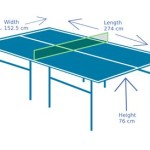Turning Your Front Yard into a Vegetable Garden: A Comprehensive Guide
Creating a vegetable garden in your front yard can be a rewarding and enjoyable experience. It provides you with fresh, organic produce, enhances the aesthetic appeal of your property, and promotes a healthier lifestyle. Here are the essential aspects to consider when turning your front yard into a thriving vegetable garden:
Choosing the Right Location
The location of your vegetable garden is crucial for its success. Select an area that receives at least six hours of direct sunlight per day. Avoid areas near trees or buildings that may cast shade. Ensure that the soil is well-drained and has a pH between 6.0 and 6.8.
Planning Your Garden
Plan the layout of your garden carefully, considering the size and shape of the space. Divide it into beds or sections, leaving enough space between plants for proper air circulation and growth. Choose vegetables that are suitable for your climate and growing season. Consider incorporating companion planting techniques to maximize space and improve plant health.
Preparing the Soil
Prepare your soil by removing any existing vegetation and tilling it to a depth of 12-18 inches. Amend the soil with organic matter, such as compost or manure, to improve its fertility and drainage. Ensure the soil pH is within the optimal range by conducting a soil test.
Selecting and Planting Vegetables
Choose vegetable varieties that are well-suited to your growing conditions and personal preferences. Consider starting seeds indoors or purchasing seedlings from a garden center. Follow the planting instructions for each vegetable, ensuring proper spacing and planting depth.
Watering and Fertilizing
Water your vegetable garden regularly, especially during hot and dry weather. Avoid overwatering, as it can lead to root rot. Fertilize your plants every few weeks with a balanced fertilizer. Use organic fertilizers whenever possible to promote soil health and plant growth.
Pest and Disease Management
Monitor your vegetable garden regularly for pests and diseases. Practice organic pest control methods, such as using companion plants, introducing beneficial insects, and applying natural pesticides like neem oil or organic insecticides. Remove diseased or infested plants promptly to prevent the spread of infections.
Maintenance and Harvesting
Maintain your vegetable garden by weeding regularly, pruning plants to encourage growth, and mulching around plants to retain moisture and suppress weeds. Harvest vegetables when they reach their peak ripeness. Enjoy the fruits of your labor and savor the taste of fresh, homegrown vegetables.

Put Your Veggies In The Front Yard Finegardening

How To Turn Your Front Yard Into An Edible Garden Communities

Front Yard Vegetable Garden Ideas Grow A Mix Of Food And Flowers

Imagine Turning Your Front Lawn Into A Vegetable Garden Straw Bale Gardens

7 Reasons To Have A Vegetable Garden In Your Front Yard Aussie Gardener

Front Yard Vegetable Garden Ideas Grow A Mix Of Food And Flowers

7 Reasons To Have A Vegetable Garden In Your Front Yard Aussie Gardener

6 Reasons To Grow A Front Yard Vegetable Garden

How To Turn Your Yard Into A Garden Grow Food Not Lawns
Ban On Front Yard Vegetable Gardens Like Punching A Baby Orlando Weekly








